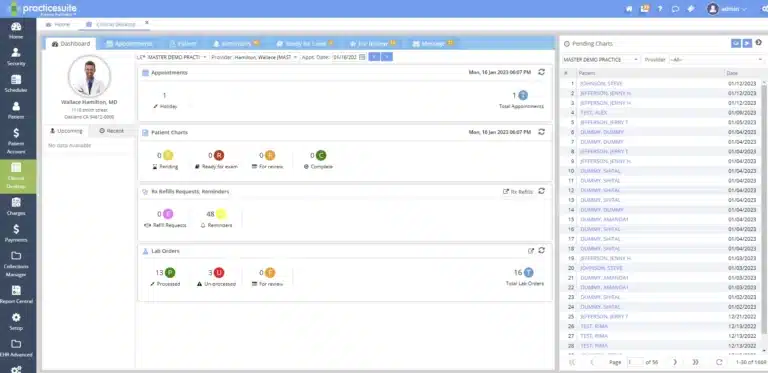PracticeSuite for Otolaryngology
Otolaryngology EHR, Practice Management, and Medical Billing Software
Manage Your Entire Practice On A Single Platform. With an affordable all in one solution for in-office and remote patient care. PracticeSuite provides flexible workflows to help organize your practice and keep it operating at peak efficiency; as well as a complete end to end virtual practice that allows you to treat any patient, anywhere, on any device.
A practice solution that will last

Over 15,000 medical professionals from solo practitioners to large groups and medical centers rely on PracticeSuite’s cloud based medical billing technology to efficiently run their practice. Every feature required to run 150 different practice specialties is available but the system allows you to customize and simplify screens to see only what you want and need in each area of the software.
or call
(813) 607-2255
We never share your information with anyone

Practice Management
Patient Portal & Kiosk
Telehealth
Electronic Registration & Check-in
Automatic Appointment Scheduling

Electronic Health Records
Simplify coding with customizable templates that are designed with the nuances of otolaryngology in mind

Revenue Cycle Management
Identify and fix lost revenue
Benchmark reimbursement rates
Establish 99% first-pass claim rate


